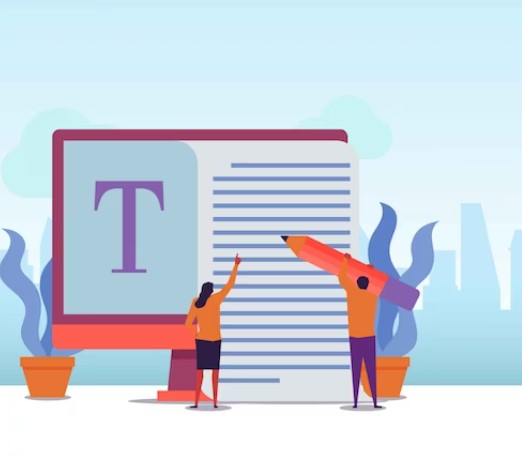If you’re a web writer, you know that titles and subtitles are essential for making your content stand out. They attract readers and help make sure your content is easy to read and comprehend. But do you know how to write titles and subtitles that will grab your readers’ attention?
In this blog post, I’ll explain what titles and subtitles are, the benefits of using them, and how to write effective titles and subtitles. I’ll also provide some examples of titles and subtitles in web writing and share best practices for writing titles and subtitles. Let’s get started.
What are titles and subtitles in web writing?
Titles and subtitles are the two main components of any piece of web writing. The title is the first thing readers will see, so it’s important to make sure it’s engaging and grabs their attention. The subtitle is a short phrase or sentence that follows the title, which helps to further explain the topic.
Titles are typically written in the form of a question or statement and should be easy to understand. Subtitles are usually an extension of the title and should provide additional context.
Titles and subtitles should be written in such a way that they’re easy to scan. That way, readers can quickly get an idea of what the content is about and decide if they want to read it.
Benefits of using titles and subtitles
There are several benefits to using titles and subtitles in web writing. First and foremost, titles and subtitles make your content easier to read.
By breaking up your content into smaller chunks with titles and subtitles, readers are more likely to stay engaged and keep reading. This is especially important if you’re writing long-form content.
Titles and subtitles also make it easier for readers to find specific information. For example, if you’re writing a blog post about SEO, a reader may be looking for information about optimizing titles and subtitles. With titles and subtitles, they can easily find this information without having to read the entire post.
Titles and subtitles can also be used to attract readers and drive more traffic to your content. By writing a compelling title and subtitle, you can increase the chances of people clicking on your content and reading it.
Tips for writing effective titles and subtitles
Writing effective titles and subtitles isn’t as difficult as it may seem. Here are a few tips to help you get started.
First, make sure your titles and subtitles are clear and concise. Avoid long, complicated titles and subtitles that are difficult to understand.
Second, use keywords in your titles and subtitles. This will help your content show up in search engine results and attract more readers.
Third, use action words in your titles and subtitles. This will help to grab readers’ attention and make them more likely to click on your content.
Fourth, use numbers and lists in your titles and subtitles. This will make it easier for readers to scan and understand the content quickly.
Finally, make sure your titles and subtitles are SEO-friendly. This means using the right keywords and making sure the titles and subtitles are optimized for search engines.
Examples of titles and subtitles in web writing
Here are some examples of titles and subtitles used in web writing:
- “10 Tips for Writing Engaging Blog Posts”
- “How to Optimize Your Titles and Subtitles for SEO”
- “5 Strategies to Increase User Engagement With Titles and Subtitles”
- “The Ultimate Guide to Writing Effective Titles and Subtitles”
These titles and subtitles are clear, concise, and to the point, and they also use keywords to attract readers.
Best practices for titles and subtitles
When writing titles and subtitles, there are a few best practices to keep in mind.
First, make sure your titles and subtitles are accurate and relevant to the content. This will help readers understand what the content is about and make them more likely to click on it.
Second, use active verbs in your titles and subtitles. This will help to grab readers’ attention and make your content more engaging.
Third, make sure your titles and subtitles are concise. This will help readers scan your content quickly and make it easier for them to find what they’re looking for.
Fourth, use keywords in your titles and subtitles. This will help your content show up in search engine results and attract more readers.
Finally, make sure your titles and subtitles are SEO-friendly. This means using the right keywords and making sure the titles and subtitles are optimized for search engines.
The importance of SEO when writing titles and subtitles
When writing titles and subtitles, it’s important to make sure they’re optimized for SEO. SEO stands for “search engine optimization” and it’s a process of optimizing your content to make it more visible in search engine results.
When writing titles and subtitles, you should use keywords that are relevant to your content. This will help your content show up in search engine results for those keywords and attract more readers.
You should also make sure your titles and subtitles are concise and easy to read. This will make it easier for search engine algorithms to understand the content and rank it higher in search engine results.
Writing titles and subtitles for mobile readers
When writing titles and subtitles, it’s important to keep mobile readers in mind. Mobile readers often have less time and attention, so it’s important to make sure your titles and subtitles are concise and easy to read.
You should also use shorter titles and subtitles so they’re easy to scan on mobile devices. You should also use keywords that are relevant to your content so mobile readers can quickly find what they’re looking for.
Analyzing titles and subtitles for user engagement
Once you’ve written your titles and subtitles, it’s important to analyze them to make sure they’re effective. You can use analytics tools to track how many people are clicking on your titles and subtitles and how much time they’re spending on each page.
This will give you an idea of how effective your titles and subtitles are at engaging readers and driving traffic to your content. You can then use this data to make changes to your titles and subtitles and make them more effective.
Courses for creating titles and subtitles
If you’re looking to learn more about creating effective titles and subtitles, there are several courses available online. These courses will teach you how to write effective titles and subtitles, how to use keywords to optimize them for SEO, and how to analyze them for user engagement.
Conclusion
Titles and subtitles are essential components of any piece of web writing. They make it easier for readers to find specific information, attract more readers, and make your content easier to read.
When writing titles and subtitles, it’s important to make sure they’re clear and concise, use keywords to optimize them for SEO, and use action words to grab readers’ attention. It’s also important to analyze them to make sure they’re effective at engaging readers.
If you’re looking to learn more about creating effective titles and subtitles, there are several courses available online. These courses will teach you how to write effective titles and subtitles, how to use keywords to optimize them for SEO, and how to analyze them for user engagement.
By following these tips and taking the time to create effective titles and subtitles, you can ensure your content stands out and attracts more readers.








